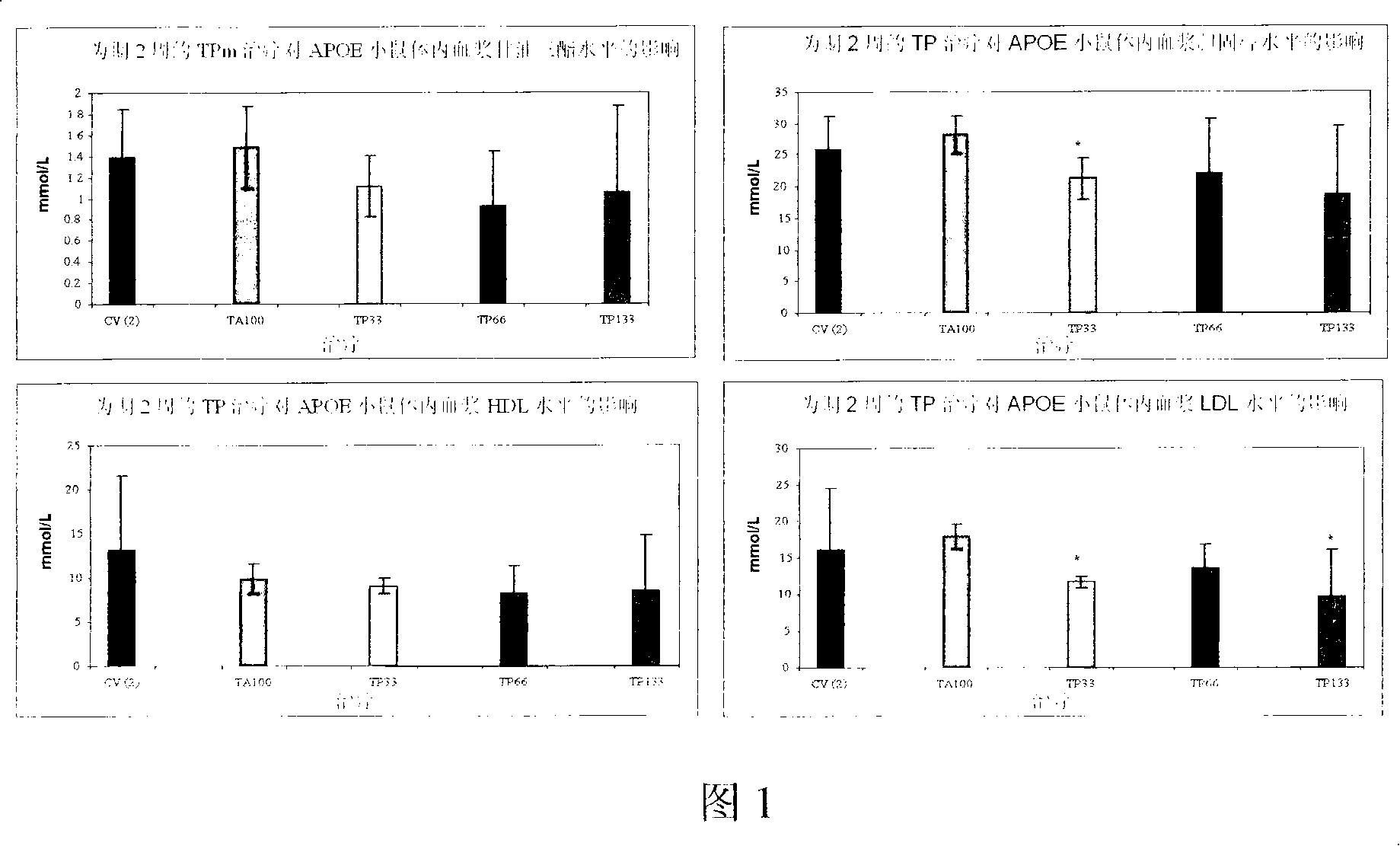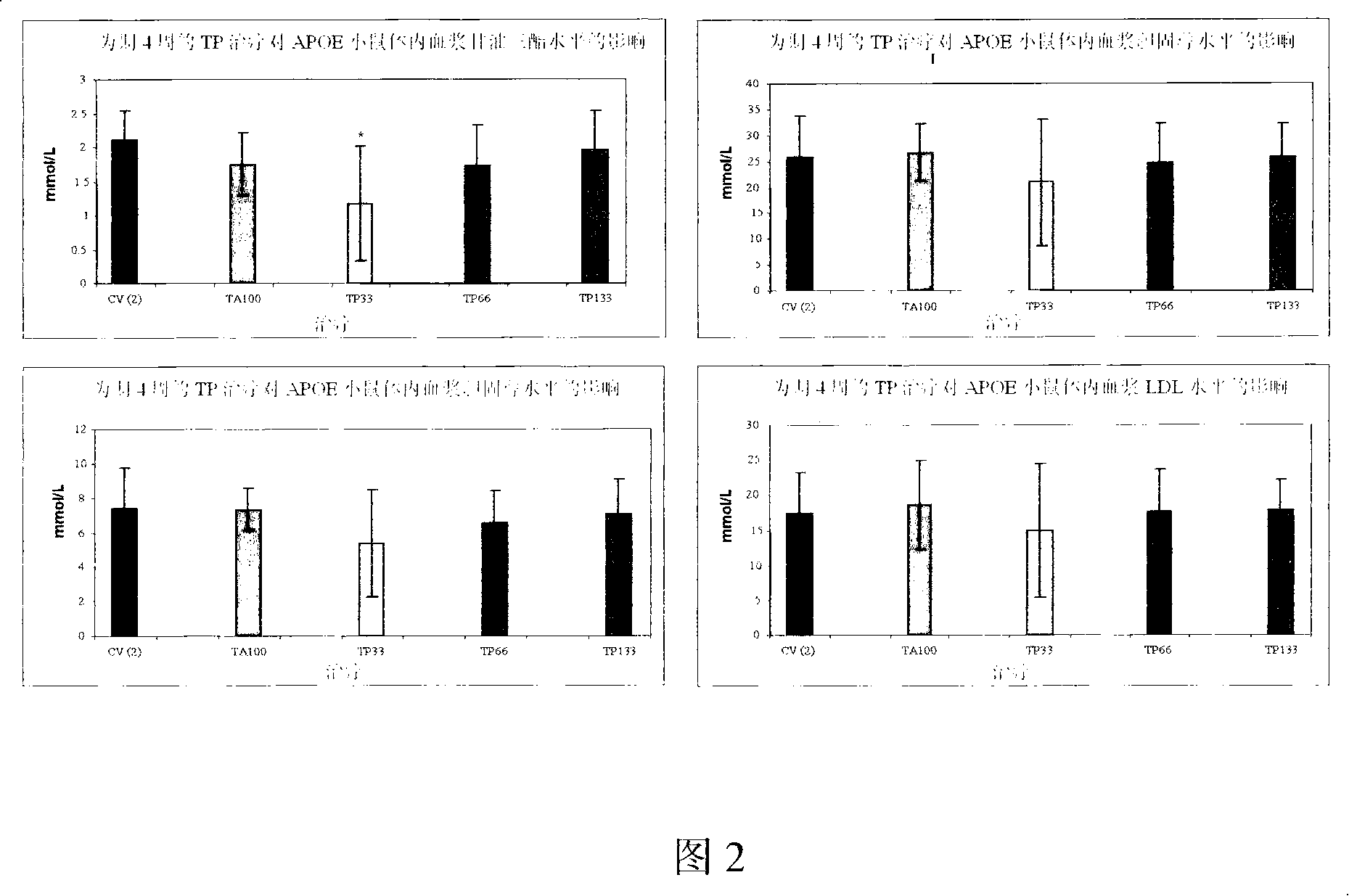Compounds having lipid lowering properties
A technology of mixtures and lipids, applied in the directions of active ingredients of hydroxyl compounds, organic active ingredients, medical preparations containing active ingredients, etc., can solve the problem of lowering cholesterol and other problems that are not mentioned
- Summary
- Abstract
- Description
- Claims
- Application Information
AI Technical Summary
Problems solved by technology
Method used
Image
Examples
Embodiment 1
[0117] This example is used to evaluate the anti-CVD effect of the tocopheryl phosphate mixture in the existing CVD apolipoprotein E (APOE) mouse model. Anti-CVD effects were determined in this case by whether elevated plasma cholesterol, triglyceride and LDL levels were reduced.
[0118] APOE knockout mouse models are widely used in cardiovascular research, which mimic many of the clinical features of some human diseases. APOE knockout mice begin to have elevated circulating lipid levels at approximately 6 months of age. Feeding the mice a high-fat, high-cholesterol diet (that is, 21% fat, 0.15% cholesterol) sharply increased CVD so that relevant symptoms could be observed as soon as possible.
[0119] method
[0120] Animals: Male APOE knockout mice (15-20 g) were obtained from Perth Animal Resource Center, Australia, and provided with pelleted mouse chow containing no vitamin E, 21% fat and 0.15% cholesterol (manufactured by Glen Forrest Stockfeeders, W.A., Australia) ...
Embodiment 2
[0158] This example is used to evaluate the effect of tocopheryl phosphate mixture (TPm) (mono-tocopheryl phosphate and di-tocopheryl phosphate) on the progression of atherosclerotic lesions in male APOE-deficient mice
[0159] method
[0160] 28 mice were divided into 4 groups: 2 control groups, 1 tocopheryl acetate (TA) group (fed at 150 mg TA / kg) and 1 TPm group (fed at 200 mg TPm / kg, containing 7% fat )
[0161] diet:
[0162] "Induction Period" - The Induction Period includes the first 16 weeks of the Treatment Period. During this period, the mice were fed a low vitamin E pelleted rat chow (less than 20 mg vitamin E per gram of food, 7% total fat), modified standard AIN93G rodent chow (SF05-040, Specialtyfeeds, Glen Forrest, WA Australia). The animals in the control group were only fed the above food, while the TA group was fed with TA at a dose of 150 mg / kg, and the TPm group was fed with TPm at a dose of 200 mg / kg. TA and TPm were released at an average dose of...
PUM
 Login to View More
Login to View More Abstract
Description
Claims
Application Information
 Login to View More
Login to View More - Generate Ideas
- Intellectual Property
- Life Sciences
- Materials
- Tech Scout
- Unparalleled Data Quality
- Higher Quality Content
- 60% Fewer Hallucinations
Browse by: Latest US Patents, China's latest patents, Technical Efficacy Thesaurus, Application Domain, Technology Topic, Popular Technical Reports.
© 2025 PatSnap. All rights reserved.Legal|Privacy policy|Modern Slavery Act Transparency Statement|Sitemap|About US| Contact US: help@patsnap.com



